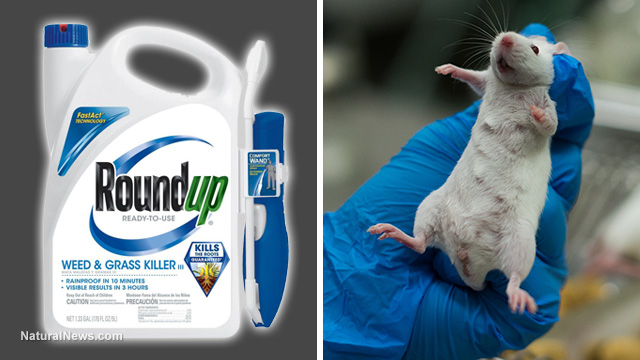Peppermint essential oil exhibits powerful antifungal activity
01/02/2019 / By Edsel Cook

Peppermint isn’t just a spice that imbues meals with a cool, peppery flavor. Indian researchers believe the essential oil of the plant can serve as a natural fungicide for Fusarium head blight.
The blight is caused by the pathogenic fungi Fusarium sporotrichioides. This common plant disease targets important cereal crops, including barley, maize, oats, rice, and wheat.
Contaminated cereals produce metabolic products that are toxic to animals and humans that consume them. One of these toxins is trichothecene, which can cause alimentary toxic aleukia and other serious foodborne diseases.
To preserve valuable grain from Fusarium contamination, synthetic chemicals are applied to grain before they are placed in storage. However, these long-lasting artificial fungicides can be just as toxic as the pathogens they protect against.
Thankfully, natural alternatives to chemical fungicides are available. Many plants contain essential oils that are made up of volatile compounds with bacteria, fungi, viral, and oxidant-fighting activity.
Peppermint (Mentha piperita) is one such plant that sees wide use as a condiment, spice, and folk medicine. Its essential oil is rich in natural antioxidants and antimicrobial. (Related: Essential oils offer a natural, side effect-free way to address anxiety.)
Testing peppermint essential oil on Fusarium pathogens
The Defence Food Research Laboratory (DFRSL) study collected peppermint plants from a herbal farm. The leaves are processed to produce the essential oil. A test determined the identity and number of phytonutrients present in that oil.
Fusarium sporotrichioides served as the test organism for the experiment. The fungi were cultured before being treated with different concentrations of the essential oil. The researchers observed the treated fungi for up to 72 hours.
The researchers determined the minimum concentration of the oil required to stop the growth of the fungus and to kill half of the culture. Afterward, they prepared the treated cultures for viewing through a scanning electron microscope to see if there were any morphological changes to the fungal mycelia.
Other tests determined the number of cellular constituents, extracellular pH, and lipid content released after treatment. These substances are normally contained inside a microorganism, so increased levels would suggest that the microorganism has been harmed.
Spraying peppermint oil over your grain could protect it against fungi
The analysis identified 22 phytochemicals in the peppermint essential oil. These metabolites include caryophyllene, l-menthone, menthol, menthyl acetate, piperitone, and pulegone. These are the most important bio-active compounds responsible for the antimicrobial activity of the oil.
Scanning electron microscope imagery showed that essential oil treatment caused the fungal mycelia to distort and shrink within 48 hours of treatment. This applied to both the minimum inhibitory concentration (500 micrograms per milliliter) and the minimum fungicidal concentration (1,000 micrograms per milliliter).
Furthermore, analysis picked up a sizable increase in the number of cell constituents released by the fungi immediately after treatment. The extracellular pH of the fungal cells also went down, as did the total lipid content inside each cell.
The extent of the changes depended on the dosage. The minimum fungicidal concentration resulted in greater morphological changes and more leakage of cellular constituents.
The results indicated that peppermint essential oil weakened the cellular membrane of the Fusarium microorganism. This increased porosity caused important substances and parts to leak out of the fungal cell, which weakened and eventually killed the fungi.
Based on their findings, the researchers believe that peppermint essential oil holds potential as a way of of protecting cereals and grains from Fusarium head blight and other fungal contamination. They recommend further examination of its anti-fungal metabolites to determine the effective and safe dosage of the oil as a fungicide or a preventive.
Do you want to know more about peppermint essential oil? Expand your horizons at EssentialOils.news.
Sources include:
PDFs.SemanticScholar.org [PDF]
Tagged Under: agriculture, crops, essential oils, Fusarium head blight, natural fungicide, peppermint, Peppermint Oil, wheat

















